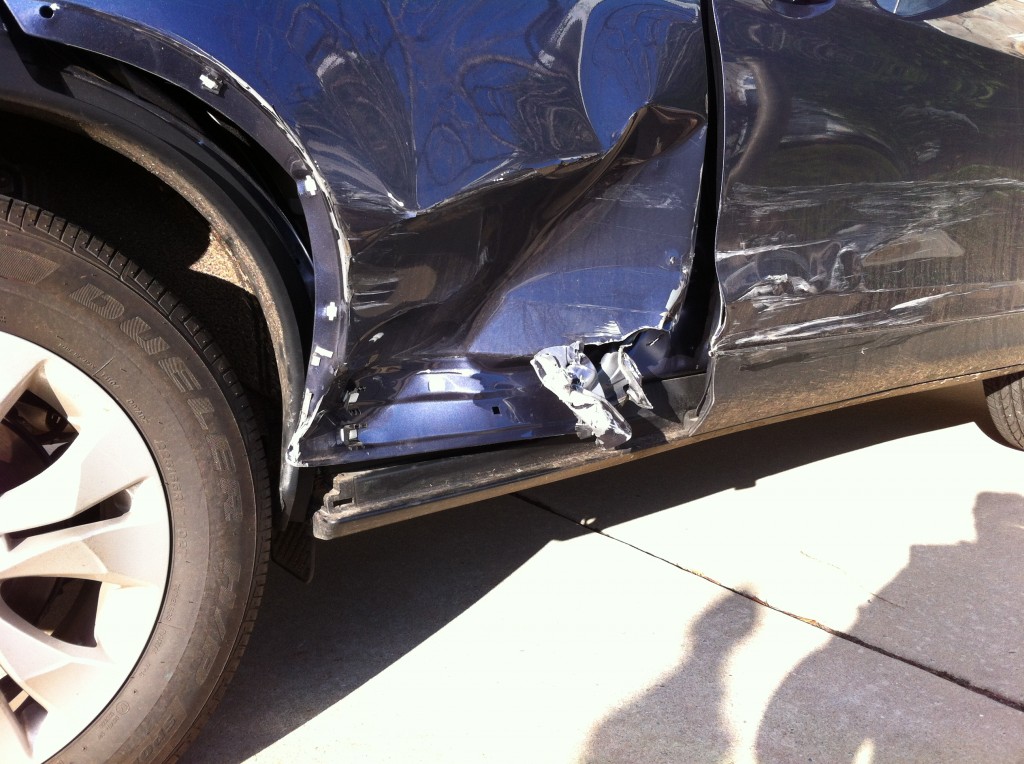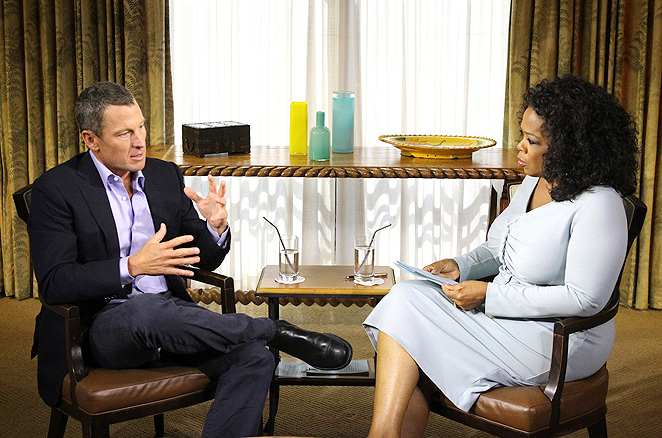
Car accident, Nov 21, 2012
First off, let me say this: No one was hurt. Regular readers know that I don’t generally write about local car accidents — unless there is an appellate decision or something legally noteworthy about them. But this was an accident that my family was in.
It was the Wednesday before Thanksgiving, and I was in the front passenger seat with Mrs. NYPILB behind the wheel. We made a right at a light from one main road to another. And out of a parking area on our right came an SUV trying to cross the road. Presumably to get to the other side.
Except that we were passing in front of him; and he t-boned us. Right into the passenger side, with the brunt of the force on the back door where my son was sitting, engrossed in a book.
There are several things that might race through the brain at this point, of which these are three:
1. The Parent (Are my kids OK, and how do we make sure there is no further potential for accident or injury?)
2. The Lawyer (The other driver failed to yield the right of way)
3. The bureaucrat (Closely linked to the lawyer, this one seeks documentation to make sure that the “i”s are dotted and the “t”s crossed with respect to insurance companies.)
Now this is not the first time I’ve written about an accident that I was in. It happened five years ago when a car with no lights and no license plates stopped in the middle of the parkway at night. I was driving and I stopped in time. One of the cars behind me did not.

The view of the inside, with the door closed, where my son was sitting
And you know what? I’m no better prepared today for being in an accident than I was back then; because accidents are unexpected. If we expected them, well, we have a better chance of avoiding them.
Because they are unexpected, we often don’t really know, at the time of the impact, the answers to the questions that may one day flow if someone was really injured and an investigation or lawsuit ensued.
How fast were you going?
What lane where you in? (How many lanes were there?)
Where did you look in the seconds before the accident?
Where, exactly, were you?
While that last question might seem a bit silly, it really isn’t, most especially if it is a highway that you have driven hundreds of times. Your brain might well be on auto-pilot and while you know generally where you are, the exact location isn’t something that you were keyed in to. You might know, for example, that you needed exit 56, and that you were somewhere around exit 30, give or take. You don’t know exactly, because it isn’t particularly relevant.
The reality is that most of our “recollection” of an accident is our brain reconstructing what has happened as we spin our heads around and say WTF? And when we reconstruct things, we tend to fill in the blanks. This is a mental process that I like to refer to has “normal human behavior.” The psychs like to call it reconstructed memory, and will tell you that the brain abhors a vacuum so it provides the filler it believes to be logical.
But it’s odd when your own brain may be doing the the reconstructing, not someone else’s.
This fill-in-the-blanks view of an accident will generally lead to conflicting accounts of an event. People see things through the prism of their own experiences, both past and present and upon review of the event that just took place, and fill in the missing blanks. We may now see mileposts and exit markers, when before we were just driving merrily along knowing that we were roughly 15 minutes from our exit and keeping an eye on the car in front of us. We see intersections and people (aka witnesses) that we hadn’t really noticed or appreciated before. Because the accident, almost by definition, happened very fast and we had no time to react.
And, of course, the adrenal gland has decided that this would be a magnificent time to give the body a good old shot of hormone that sends the heart and mind racing.
After an accident, nothing is normal at all. But that moment when the mind and body are reeling is the moment the brain is imprinted with the “details” of recollection. Since those recollections are experienced through the prisms of our own histories, the lawyer might well “see” something different in an accident than the doctor, mechanic or cop.
All of this is something that the reader likely already knows, on an intellectual level. And yet, when one actually goes through the event, it doesn’t really matter. The god’s eye view of what happened — that fly on the wall view of things — may well be distorted by emotion, by experience and by reconstruction.
I wrote this post six weeks ago and have been sitting on it ever since, hoping I could come up with some kind of snappy conclusion or insight. But I can’t, other than to say that the most important thing is immediate safety. For us, sitting in the roadway after the accident near a busy intersection, that mean moving the car immediately out of danger into the parking area where the offending SUV came from.
I remember my father telling me, when I was learning to drive some 35 years ago, that if I got a flat tire on a bridge that I should not stop. Drive it off the bridge, and to hell with any additional damage to the car. It is, after all, just a car.
Safety first.
 Having now confessed to Oprah about doping in order to win seven Tour de France titles, Lance Armstrong is obviously in a heap of legal troubles. Most of those seem to involve his perjury (criminal), defamation of others when he called them liars for calling him a cheat (civil), and a slew of contractual issues regarding his sponsors.
Having now confessed to Oprah about doping in order to win seven Tour de France titles, Lance Armstrong is obviously in a heap of legal troubles. Most of those seem to involve his perjury (criminal), defamation of others when he called them liars for calling him a cheat (civil), and a slew of contractual issues regarding his sponsors.


